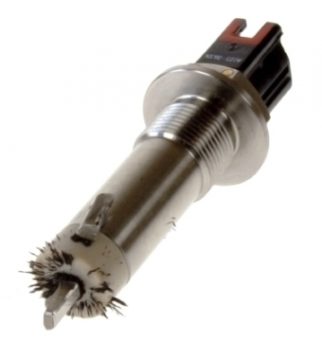Gill Sensors Offers Oil Debris Sensor

Gill Sensors and Controls Limited has announced immediate availability of its new Oil Debris Sensor that provides continuous real-time monitoring of particle contamination in hydraulic and engine oil lubrication systems. The new sensor triggers either an immediate shutdown in cases of large particle build-up, or an early warning indication for needed maintenance in both cases preventing unexpected downtime. Typical applications include monitoring helicopter gearboxes, industrial gearboxes, diesel engine, motorsports, marine, power generation, automotive systems, wind turbine gearboxes and other industrial applications.
Solid particle contamination is the leading cause of hydraulic and lubrication oil system breakdown, which can not only be costly to fix, but when compounded with unscheduled downtime, also cause substantial productivity losses.
Unlike typical on-line particle counters and contamination sensors on the market, Gill’s Oil Debris Sensor incorporates an extremely powerful, high temperature neodymium magnet that collects debris and keeps it from recirculating through the system, thereby eliminating the possibility of further damage to components. With two independent channels for particle detection one for fine metallic debris and the other for lager metallic debris engineers have unprecedented real time information on the health of the mechanical components that are most reliant on hydraulic lubrication systems.
“Engineers will find the new sensor invaluable for providing an accurate picture of particle accumulation throughout their entire lubrication system,“ says Paul Cain, manager of business development for Gill Sensors North America. “With this type of malfunction ‘safeguard’, engineers and maintenance managers now have much better control over system operation and costs.”
Featuring solid state technology with no moving parts, the new sensor operates at temperatures from -40°C (-40 °F) to 150° C (302 °F) and works independently of oil flow rate, temperature, viscosity, oil color or air and water content. Outputs are from 4-20 mA, 0-10 v and CANbus outputs.





